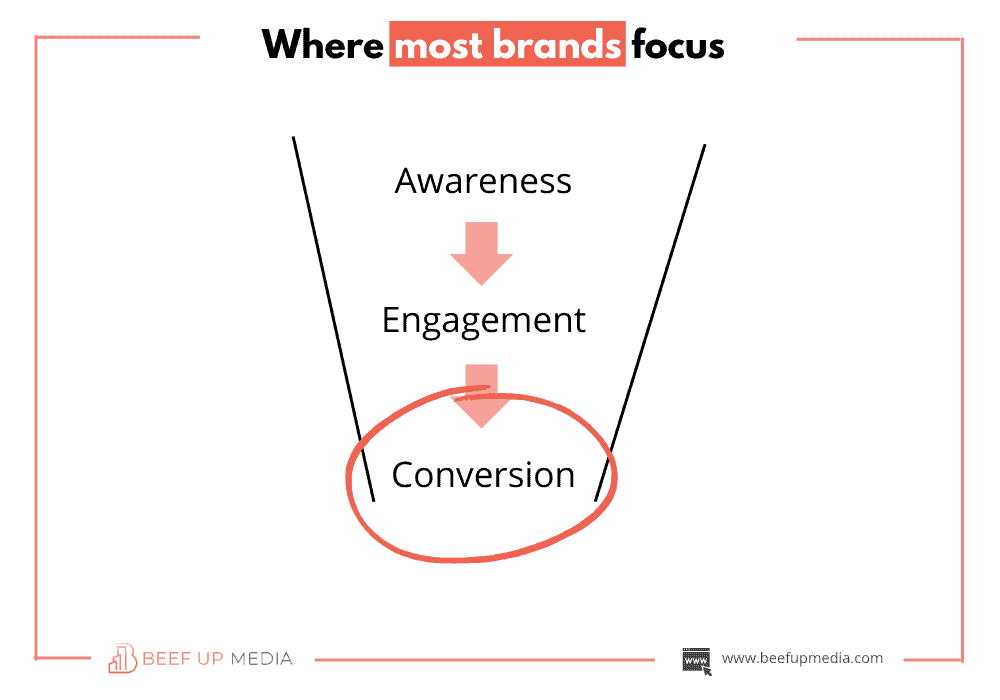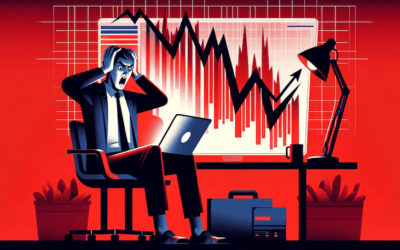Marketing is a crucial pillar of any successful business.
It helps a brand to establish its presence in the market, create awareness and reach its potential customers.
Even though the principles of marketing remain just the same, how we do marketing has changed over the years.
A lot of the credit for that goes to the internet & the idea of marketing funnels getting popular.
In this post, we’ll explore where most brands are going wrong with their marketing efforts + marketing funnels and how they can be improved with a slightly different approach to full-funnel marketing strategy.
But, first, the question is…
Contents
Why do we do marketing?
Through effective marketing, your brand can differentiate itself from competitors, build trust and establish a strong reputation.
Marketing also helps to drive sales and revenue by effectively communicating the value proposition and benefits of a product/service to your prospective customer.
By regularly engaging with your target audience and understanding their needs, you can continuously improve and evolve to meet the changing market demands.
Basically, everything we do in marketing can be associated with one of these three things:
- Awareness
- Engagement
- Conversion
Where most brands go wrong
Most businesses just focus on the bottom part of the marketing funnels i.e. conversion or acquiring as many customers as possible rather than the entire customer journey.

Why?
- It’s easily justifiable & measurable.
- It gives short-term rewards.
And who doesn’t like some quick money?
But in the pursuit of chasing short-term rewards, these brands not only neglect customer behavior but also long-term growth.
This is where full-funnel strategies come into play.
What is a full-funnel marketing strategy?
A full-funnel marketing approach considers all three parts, awareness, engagement, and conversion, together.

The full-funnel approach creates a seamless and personalized experience for your customers by guiding them through each stage of the funnel.
The best part?
It recognizes that every customer is unique and at different stages of the buying journey.
Hence, it considers all touchpoints between your brand and your potential customers.
The end result?
It maximizes each interaction to drive growth and revenue through different marketing channels.
A Nielsen study commissioned by Google shows that this increases the ROI by 70%.
Different marketing tactics work together in sync to achieve clearly defined business goals.
Talk about a holistic approach. Haha.
Importance of Full-funnel Marketing Campaigns
By now, you must have understood the importance of a full-funnel approach.
If not, here’s some cherry on top i.e. advantages of using a full-funnel marketing strategy rather than a conversion-centric strategy.
- Fewer leaks, more conversions, and increased customer lifetime value.
- Makes the decision-making process for your prospects much easier, rather than forcing the sale on them
- Strong relationships with your customers, leading to more brand equity i.e. emotional connection to your brand.
- Better competitive edge.
Hence, short-term wins combined with long-term growth.
A different take on full-funnel marketing
Everything so far about full-funnel marketing must have seemed enticing, isn’t it?
There’s just one problem with it.
Most people approach it in a linear way.
But, the customer journey is not so linear.
(Wish it was though. Our jobs would have been really easy!)

Humans are fickle creatures and anything can happen.
They see some social media ads and then go search for the product on Google.
Then go to the website through search ads and eventually make the purchase through another Facebook ad.
Complicated?
Yes.
But that’s how it happens.
Hence, they can skip any steps in the customer journey.
They can even move back to a previous one.
How do you solve this problem?
To tackle this, we follow an interconnected approach rather than a linear approach.
It looks something like this.

This means that everything happens simultaneously, covering every possible action any user can take.
Meaning, the awareness stage is linked to both the engagement/consideration stage and the conversion stage.
The same goes for the engagement/consideration/decision stage and the conversion stage as well.
They are both linked to each other as well as the awareness stage.
So, those who want to make the purchase right away get to do so, while those who don’t, get to be nurtured.
How different stages work together
The beauty of a full-funnel approach is that all three stages work together.
Influencer marketing works with blog posts.
They both work with video ads and display ads.
Then we have user-generated content helping with optimizing for search terms.
Oh, and white paper. It can be included in the sales funnel too.
All of this increases the touchpoints while also covering the different types of audience segments… bringing in better-qualified leads and more sales.
But how exactly does that happen?
Let’s see.
Awareness
The goal here is to
- Reach as many people as possible.
- Build awareness.
- Get the right people to engage with your brand.
In simplest terms, the objectives of the Awareness Stage are to build brand recognition, create interest, and reach the target audience.
Once they are in your ecosystem i.e. interacted with your brand, three things are possible.
- They leave.
- They engage i.e. view more of your content or sign up as a subscriber. (Lazy buyers)
- They purchase. (Impulsive buyers!)
If they leave, you just retarget them with more awareness content to get them back into your ecosystem.
For the other two…
Engagement
Once they start engaging with your content or sign up, basically getting nurtured (going from awareness to consideration), again there are two possibilities.
- They either leave.
- Or they purchase.
Remember, the nurturing process is an ongoing process in the customer journey.
But there comes a time when the user would either want to leave or make the purchase.
If they leave, retarget them with more awareness content and get them to engage again.
Conversion
At this point, you have already converted a chunk of your both aware and engaged audience.
The key is to create a customer list and get them to engage more, provide a fantastic customer experience, and retain those valuable customers.
But a lot of people drop at this stage too.
You’d just retarget them again with either ads or email marketing i.e. email follow-up campaigns/abandoned cart sequences and get them back in the game.
Keep boosting those conversion rates.
Importance of Continuously Evaluating and Improving Your Full-Funnel Marketing Approach
The problem with all things marketing?
Even though the basic principles remain just the same…
The market and consumer behavior are constantly changing.
Hence your brand needs to adapt its marketing strategies to stay relevant and meet the changing demands.
You need to constantly analyze the performance of various marketing campaigns and follow a strategic approach.
This way you can make informed decisions on what strategies are working and which ones need improvement.
Moreover, it’s not only important to look at each funnel stage but your entire funnel as a whole as well.
This also helps your brand stay ahead of the competition by constantly evolving to meet the changing market demands.
Do you really need any more reasons?
Final thoughts
In conclusion, a full-funnel marketing strategy is a comprehensive approach to marketing that targets potential customers at every stage of the buying journey.
But the thing is…
It cannot be created and executed in a day… not even a month.
It takes time, effort, and patience.
And of course, the importance of continuously evaluating and improving your full-funnel strategy cannot be overstated.
This is what enables you to stay relevant, make data-driven decisions, and drive better results.
And all of that is absolutely worth it.
If you need some help implementing a full-funnel marketing strategy for your brand, book a free strategy call, and let’s have a chat.





0 Comments